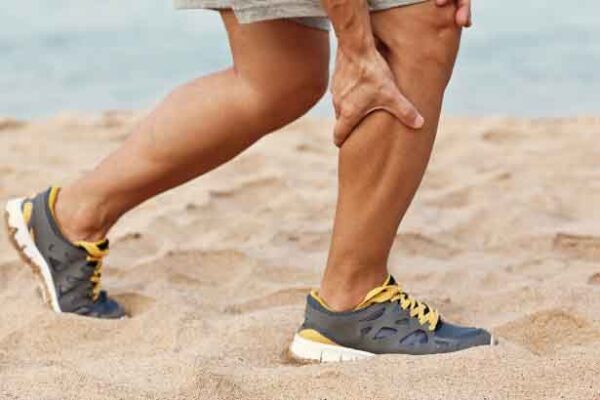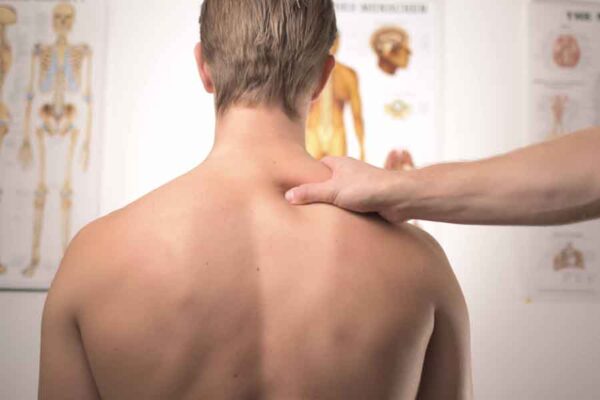This is a question we get asked all the time and one, which can produce widely different responses depending on your background.
There are many similarities between the professions which include;
- we all treat musculoskeletal pain conditions;
- we all have protected titles, meaning that any therapist cannot call themselves a Chiropractor, Osteopath or a Physiotherapist, unless they have completed the relevant accredited course;
- we all have university based education.
Put simply, the main difference between a physiotherapist, a chiropractor and an osteopath is in the philosophy of each profession. However, there are also fundamental differences in the approach we take with assessing and treating people.
Quick resume
For all post operative Treatment- Physiotherapy
For spinal problems- Physiotherapy, Osteopathy or Chiropractic treatment.
For peripheral joint or muscle problems e.g Elbow, Shoulder, Hip, Knee and Ankles- Physiotherapy
For any neurological problem such as stroke, Parkinson’s etc- Physiotherapy
For all balance and coordination problems- Physiotherapy
Ergonomic advice- Physiotherapy


Physiotherapy-helps people affected by injury, illness or disability through movement and exercise, manual therapy, education and advice. They maintain health for people of all ages, helping patients to manage pain and prevent disease (Chartered Society of Physiotherapists).
Osteopathy works with the structure and function of the body. It is based on the principle that the well-being of an individual depends on the skeleton, muscles, ligaments and connective tissues functioning smoothly together. Osteopaths use physical manipulation, stretching and massage to:
- increase joint mobility,
- relieve muscle tension,
- enhance the blood and nerve supply,
- and to help your body’s own healing mechanisms
(General Osteopathic Council).
Although both professions do promote that they treat/manage all muscle and joint issues, osteopaths however predominantly treat more spinal problems such as lower back and neck pain and overall osteopaths treat fewer peripheral joints, e.g. the shoulder, wrist/hand, knee and ankle/foot.
Additionally, osteopaths treat less muscle and tendon related injuries than a physiotherapist. Osteopaths workload is around 80% spinal work whereas physiotherapists’ training and experience expose them to a more varied caseload of both spinal, peripheral joint issues as well as muscle and tendon injuries.
Most orthopaedic physiotherapists see approximately 50% spinal and 50% peripheral joints including muscles and tendons. All of the research and treatment protocols into muscle and tendon problems are led by physiotherapists.
Training differences-
One of the key differences between the two degrees osteopathy and physiotherapy is the breadth of the medical conditions the clinician would be exposed to and expected to treat. As part of their university course physiotherapists attend work placements to put their skills into place and treat real patients. These are often in an NHS settings, hospitals, hospices, GP practices etc… and so work in a wide variety of health settings and treat a broad range of physical problems associated with different ‘systems’ of the body. Physiotherapists treat respiratory, neurological and musculoskeletal conditions. This provides physiotherapists with an excellent foundation and range to their knowledge and skills.
Osteopaths also have clinical placements as part of their university course, however this is often a ‘private practice’ teaching clinic. Most patients will attend due to musculoskeletal pain and sports injuries e.g. neck and back pain. This exposes the osteopathy students to a narrower breadth of injuries and complaints during their training.


Treatment differences-
Most physiotherapists will use a combination of ‘hands on’ treatment and exercise-based treatment (rehabilitation).
‘Hands on’ or manual therapy may involve techniques applied to your muscles and joints to improve their mobility and your overall range of motion.
It is very uncommon that you will see a physiotherapist that does not give you a home exercise-based programme. These exercises are aimed at reinforcing the benefits you have received in your treatment session and are an essential part of most treatment plans.
Osteopaths also use ‘hands on’ treatments but may not compliment this with exercises for you to carry out between your treatment sessions, making you more reliant on receiving their’ hands on’ treatment. This does vary from one clinician to another; however, most physiotherapists will use exercises as an essential part of their treatment regime more often than osteopaths.
During physiotherapists’ undergraduate training, there is more of a focus on the use of exercise therapy and rehabilitation. During most osteopathic education, there is very little of this, which some people feel is a critical limitation of osteopathic training. However many osteopaths do learn rehabilitation techniques later in their postgraduate education.
Research has now been established to show exercise therapy is a very important part of a treatment program for any back condition.
Physiotherapists also have extensive training and are exposed to the management and treatment of patients after many types of orthopaedic surgical operations such as ligament reconstructions, arthroscopies, joint replacements and back surgery. Osteopathic training does not expose you to this.
So most post-operative treatments would be managed by a physiotherapist.
When it comes to spinal treatment and spinal manipulation both osteopaths and physiotherapists use these techniques. However physiotherapists are generally more likely to use joint mobilisations which are a gentler technique to mobilise the spine. However both professions have an array of different techniques to treat spinal conditions.
So what then do Chiropractors do?
Chiropractors will generally treat pain related problems using manipulation of the joints (adjustments), either of the spine or the limbs. Manipulation is a fast manual technique that takes the joints being treated to the end of their available range of motion. This is commonly viewed as a treatment with more risk to the individual that is not always necessary. Both Physiotherapists and Osteopaths will use manipulation, but it is generally, not seen as a first option in treatment as it is in Chiropractic. Also, the chiropractic philosophy relies on the belief that the cause of back pain lies with subluxations, or certain joints being ‘subluxed’ (not to be confused with the medical definition of a subluxation, which is the incomplete or partial dislocation of surfaces within a joint). This belief is controversial, even within the chiropractic profession, as a ‘chiropractic subluxation’ has never been shown to exist.
This stance may seem reasonable, but many chiropractors still endorse using static x-ray to identify the ‘chiropractic subluxations’. This obviously makes no sense when it is admitted that it is not visible on X-ray. Using X-ray in diagnosis of this sort has been condemned as dangerous, as it exposes individuals to levels of potentially carcinogenic radiation for no reason, as well as being of no use in the diagnosis of non-specific low back pain.
There are also issues regarding safety of chiropractic in the treatment of neck pain. Chiropractors are associated with more serious adverse reactions than other health professionals (E Ernst (2010). “Deaths after chiropractic: a review of published cases”. Int J Clinical Practice 64 (8): 1162–1165.). Whilst many Physiotherapists and Osteopaths will use manipulation of the cervical spine, Chiropractic treatments of the lower back may often involve neck manipulations. There is no evidence that manipulation of the cervical spine will have a positive effect on a person’s low back pain.
Having worked alongside chiropractors many of them do a very good job in treatment but my main complaint is that they do not give any form of guidance to the patient to help themselves, to build up core muscles to prevent this reoccurring and are keen to sign the patient up for prolonged monthly check ups.
Commonly asked Questions-
Do I need an X-Ray?
These are usually unnecessary unless there has been a distinct trauma such as whiplash or there are some serious red flags that alert the practitioner .
Most X-rays will show all the normal and natural changes due to the ageing process. I have found that often people with appalling X-rays often do as well as those with better ones. Due to the exposure to harmful radiation, it is recommended that you do not have an x-ray without a good clinical reason
Is Neck manipulation safe?
Chiropractors believe it is perfectly safe and undertake many cervical spine manipulations every day. Research shows that the risk of artery damage is estimated at 1 in 100,000 manipulations.
Mobilisation does not share these risk factors and is a safe treatment.
I have been told my pelvis is out of alignment- can a manipulation put it back?
This is a big area of controversy between the professions. There is no evidence to support the belief that the pelvic joints slip out of place. The pelvic joints are two of the most stable joints in the body. When the joints are stressed, the bone will fracture first before the joint is displaced! – they are extremely stable.
The pelvis remains a solid ring and any displacement is simply a tilting of the pelvis on the hip joints. This may be due to muscle tightness pulling up on one side. The therapy commonly offered works on the local soft tissues and how they affect the function of the stable pelvic ring rather than simply putting it back into place. Exercise therapy also often helps patients manage pain in this area.
Do I need a long course of manipulation for my back problem?
There is no reasonable evidence available which supports the use of regular manipulations as being of general health benefit or prevention within the musculoskeletal system. There is plenty of evidence to suggest exercise, posture and function as being the best methods to manage long term issues.
Can manipulation really help my Asthma, or colic, or bed wetting?
There is no evidence that manual therapy of the spine helps in non-musculoskeletal problems like asthma, colic, bed wetting, painful menstrual cycle, high blood pressure, or depression for example. Any anecdotal benefits observed in this area are considered to be as a result of the placebo effect.
